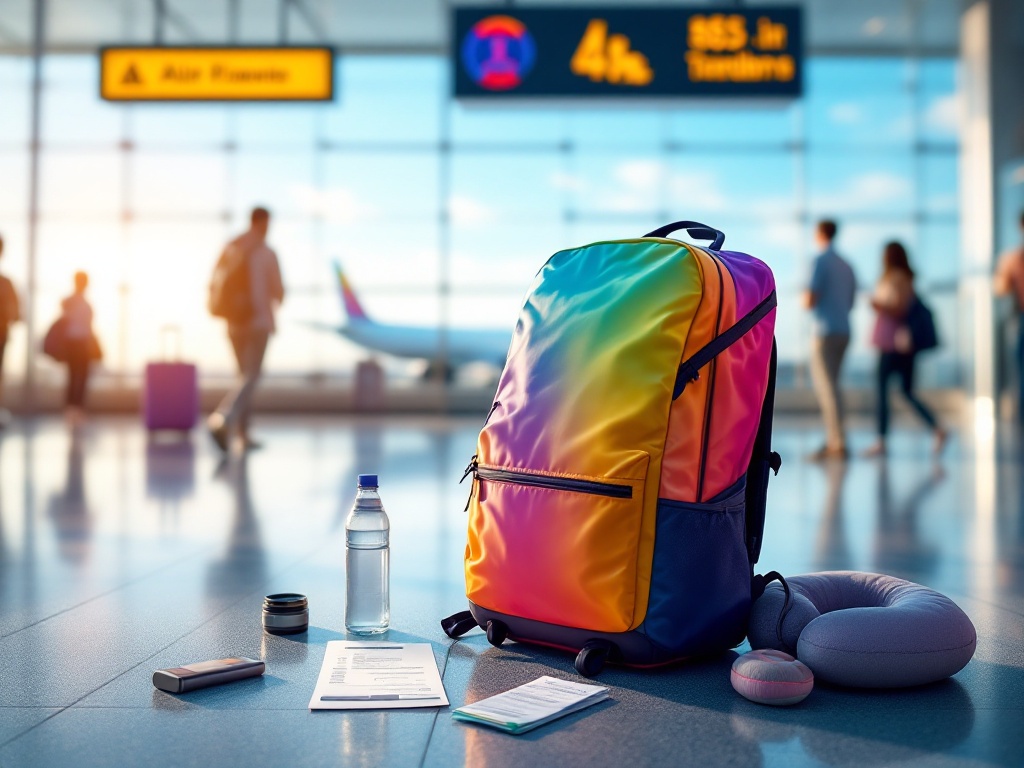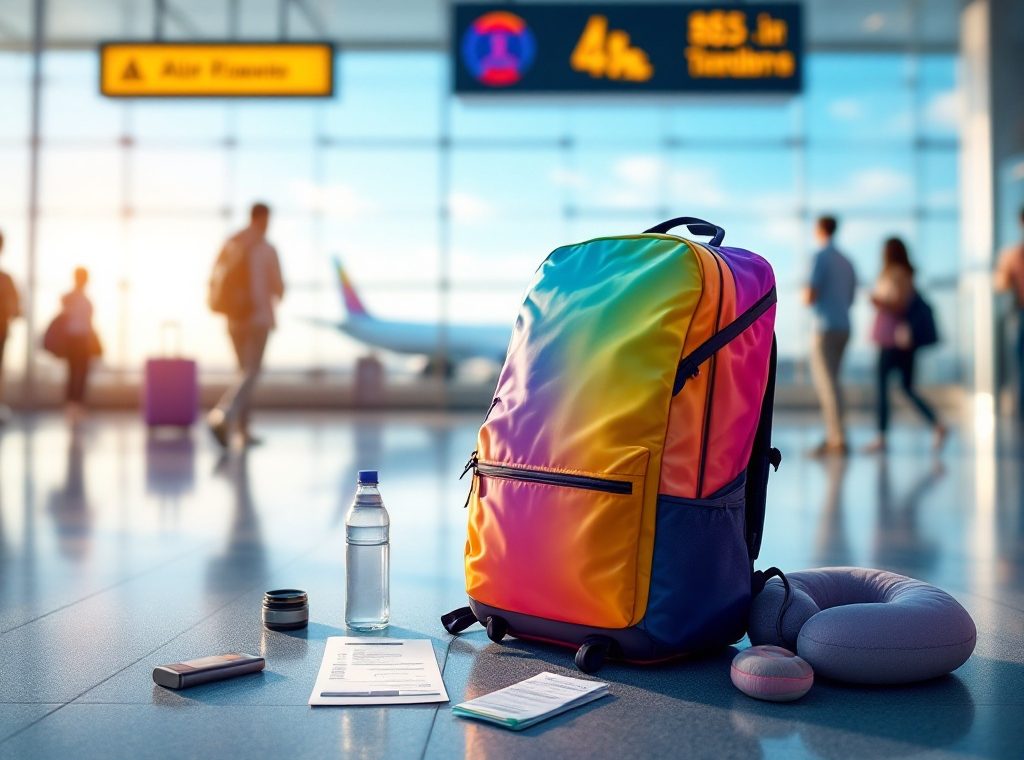How to Proteck Your Luggage: Backpack Cover for Air Travel
Worried about your backpack surviving the rigors of air travel? Discover how a simple backpack cover can protect your belongings from damage, dirt, and unpredictable weather. Learn about the different types of covers, from lightweight to heavy-duty, and find the perfect fit for your travel needs. Explore practical packing tips and airline regulations to ensure a smooth and worry-free journey. Read on to safeguard your backpack and travel with confidence.
Important information

- Backpack covers protect your belongings from dirt, moisture, scratches, and scuffs during air travel.
- They enhance security by concealing zippers and compartments, deterring theft.
- Covers come in various sizes and materials (lightweight for portability, heavyweight for durability). Measure your backpack for the right fit.
- For air travel, check airline baggage restrictions for size and weight, secure loose straps, use TSA-approved locks, and distribute weight evenly.
- Using a backpack cover protects your backpack from damage, extending its lifespan.
Understanding Backpack Covers for Air Travel
A backpack cover offers comprehensive protection for your belongings during air travel, shielding them from dirt, moisture, and potential damage. This extra layer ensures your items stay clean and safe, especially in unpredictable weather conditions. It also prevents scratches and scuffs that can occur during handling. Moreover, some covers enhance visibility and deter theft by concealing zippers and compartments. A backpack cover is a smart investment for any traveler.
What Are Backpack Covers and Their Purpose?
Backpack covers offer simple yet effective protection, shielding your pack from damage, dirt, and rain. This preserves your backpack’s appearance and safeguards its contents, especially while traveling. Lightweight and easily packed, a cover provides valuable peace of mind. Imagine hiking through a downpour; your gear stays dry thanks to the cover. It’s a smart investment for any backpack owner.
How Backpack Covers Protect Your Bag During Travel
Backpack covers offer excellent protection against scratches, scuffs, and dirt, which is especially helpful while traveling. This protection helps maintain the appearance of your backpack and extends its lifespan.
Safeguarding against the elements, backpack covers shield your belongings from rain, snow, and spills. The waterproof material ensures your valuables stay dry, regardless of the weather.
Beyond protection from the elements, these covers enhance security. By concealing valuables and zippers, they deter theft and provide added peace of mind during your travels.
Benefits of Using a Backpack Cover for Air Travel
Backpack covers offer excellent protection against damage, shielding your pack from scratches, scuffs, and tears during travel and handling. They also safeguard your belongings from rain, snow, and dirt, ensuring they stay dry and clean.
A backpack cover helps maintain your backpack’s condition, preserving its appearance and extending its lifespan. For added security, covers conceal zippers and compartments, which can deter theft. Their enhanced visibility in low light makes it easier to spot your bag in dimly lit areas like an airport.
Damage Prevention and Durability
Backpack covers protect your investment by shielding it from scratches, scuffs, and impacts, keeping it looking new for longer. They also reinforce vulnerable areas like straps and zippers, which are often the first to wear out.
Weather Protection: Rain and Elements
Backpack covers safeguard your gear from rain and snow, shielding your pack from harsh weather. These covers, especially transit covers, are versatile, protecting your backpack during travel and storage, ensuring your belongings remain safe, dry, and damage-free.
Maintaining Your Backpack’s Condition
A backpack cover is a great investment for protecting your pack. It shields it from dirt, scratches, and the general wear and tear of travel. Maintaining your backpack cover is simple: wipe it with a damp cloth after each use, let it dry completely, and occasionally inspect it for damage. Replace the cover when necessary. This easy maintenance will keep your backpack looking its best and significantly extend its life.
Types of Backpack Covers
Transit covers provide versatile protection for backpacks and luggage of all sizes. Equipped with handles and straps, they are easy to carry. Whether you need a cover for a small daypack or a large backpacking bag, finding the right fit ensures optimal protection. Choose from lightweight nylon for basic rain resistance or heavy-duty waterproof fabrics for extreme conditions. Select the material that best suits your travel needs.
Transit Covers and Their Dual Functionality
Transit covers offer incredible utility with their dual functionality. Primarily, they shield backpacks from the rigors of travel, safeguarding your belongings from baggage handling mishaps. Secondly, they serve as a reliable rain cover, protecting your pack from unexpected downpours. This versatility makes them a valuable asset for any traveler.
Size Variations: Choosing the Right Fit
Before buying a backpack cover, measure your backpack’s height, width, and depth to ensure a snug fit and optimal protection for your belongings during travel. Backpack covers come in various sizes, so choosing the correct one is essential for keeping your gear safe and secure.
Material Considerations: Lightweight vs. Heavyweight Options
Looking for a backpack cover? Consider these points when choosing one:
Lightweight Backpack Covers
Lightweight covers pack down small, making them incredibly portable and easy to store. However, this portability often means less protection against the elements and wear-and-tear.
Heavyweight Backpack Covers
Heavyweight covers, typically made from vinyl or polyester, offer superior durability and protection. These tougher materials safeguard your pack against rough handling, sharp objects, and inclement weather. But, they are less portable.
The best choice depends on your individual travel style and priorities. If you prioritize portability, a lightweight cover is suitable. If durability and protection are paramount, opt for a heavyweight cover.
Practical Packing Advice for Air Travel
Review the airline’s website for specific baggage size, weight, and prohibited item restrictions before you start packing.
Secure any loose straps and buckles on your checked backpack to prevent damage or entanglement during transit.
Use TSA-approved locks to enhance the security of your checked backpack.
When packing fragile items, place them in the center of your bag surrounded by soft clothing for added protection.
Distribute the weight evenly within your backpack to protect zippers and seams from strain.
Packing cubes are an excellent way to organize and compress clothing, saving space and reducing wrinkles.
A backpack cover offers extra protection against scratches and bad weather.
Fasten your backpack straps securely to maintain stability and prevent shifting during transit.
Understanding Airline Regulations and Compliance
Consult your airline’s website. Airline baggage restrictions can vary, so it’s essential to check the specific size and weight limits for your route.
Familiarize yourself with prohibited items. Many airlines restrict hazardous materials, liquids, and sharp objects. Knowing these restrictions can prevent confiscation at security checkpoints.
Adhere to weight restrictions. Sticking to the allowed weight limits will help you avoid extra baggage fees, saving you money.
Protect your luggage. Pack carefully and use a protective cover to minimize potential travel damage.
Preparing Your Backpack for Airline Checked Luggage
Fasten your backpack securely, ensuring it’s fully covered and the straps are snug.
Tips for Securely Packing and Strapping Your Backpack
Ensure your backpack is fully packed and all zippers are closed.
Snugly fit the rain cover, protecting all sides.
Secure the cover by adjusting the straps and utilizing any additional straps or pockets the cover may offer.










